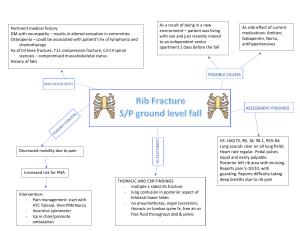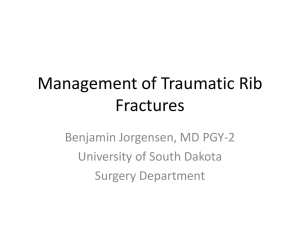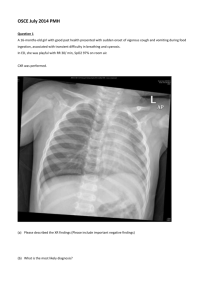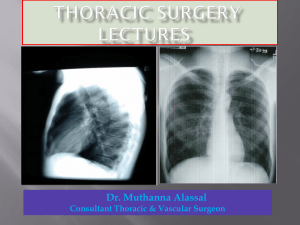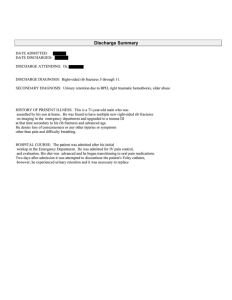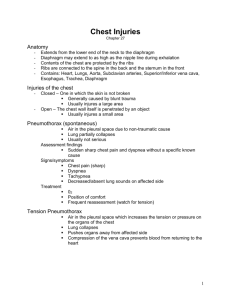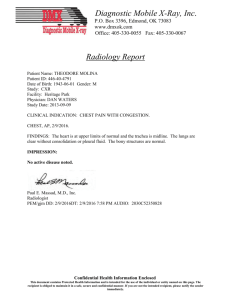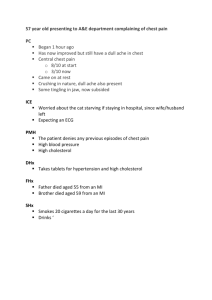INITIAL - nndhealthcare.com
advertisement
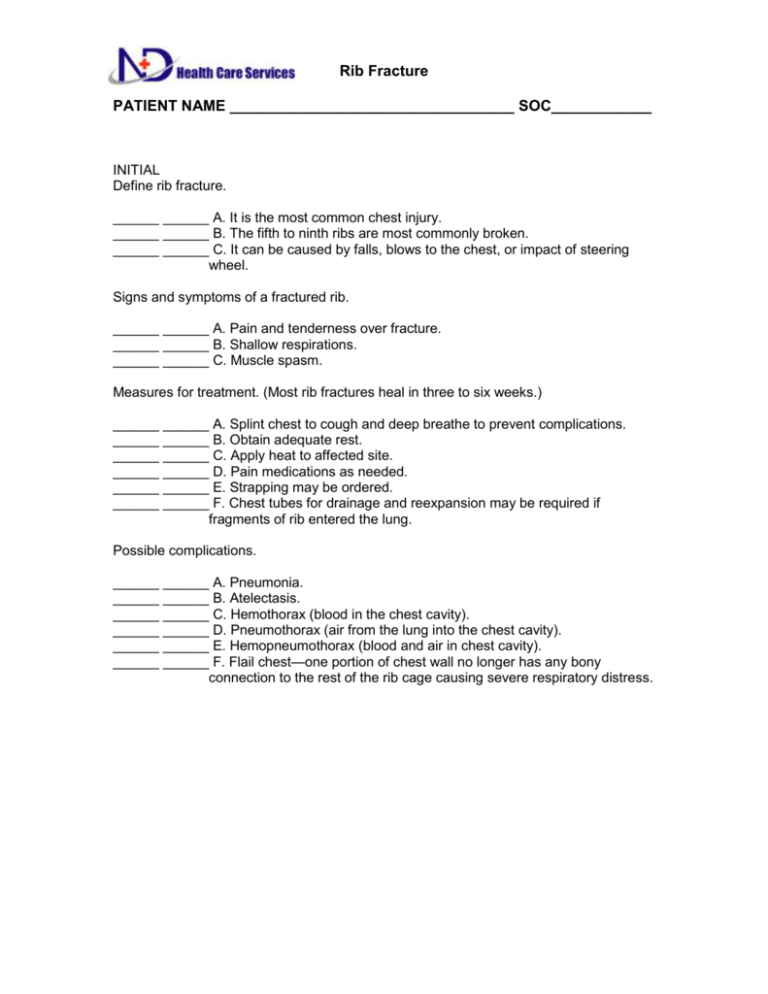
Rib Fracture PATIENT NAME __________________________________ SOC____________ INITIAL Define rib fracture. ______ ______ A. It is the most common chest injury. ______ ______ B. The fifth to ninth ribs are most commonly broken. ______ ______ C. It can be caused by falls, blows to the chest, or impact of steering wheel. Signs and symptoms of a fractured rib. ______ ______ A. Pain and tenderness over fracture. ______ ______ B. Shallow respirations. ______ ______ C. Muscle spasm. Measures for treatment. (Most rib fractures heal in three to six weeks.) ______ ______ A. Splint chest to cough and deep breathe to prevent complications. ______ ______ B. Obtain adequate rest. ______ ______ C. Apply heat to affected site. ______ ______ D. Pain medications as needed. ______ ______ E. Strapping may be ordered. ______ ______ F. Chest tubes for drainage and reexpansion may be required if fragments of rib entered the lung. Possible complications. ______ ______ A. Pneumonia. ______ ______ B. Atelectasis. ______ ______ C. Hemothorax (blood in the chest cavity). ______ ______ D. Pneumothorax (air from the lung into the chest cavity). ______ ______ E. Hemopneumothorax (blood and air in chest cavity). ______ ______ F. Flail chest—one portion of chest wall no longer has any bony connection to the rest of the rib cage causing severe respiratory distress. Rib Fracture PATIENT NAME __________________________________ SOC____________
